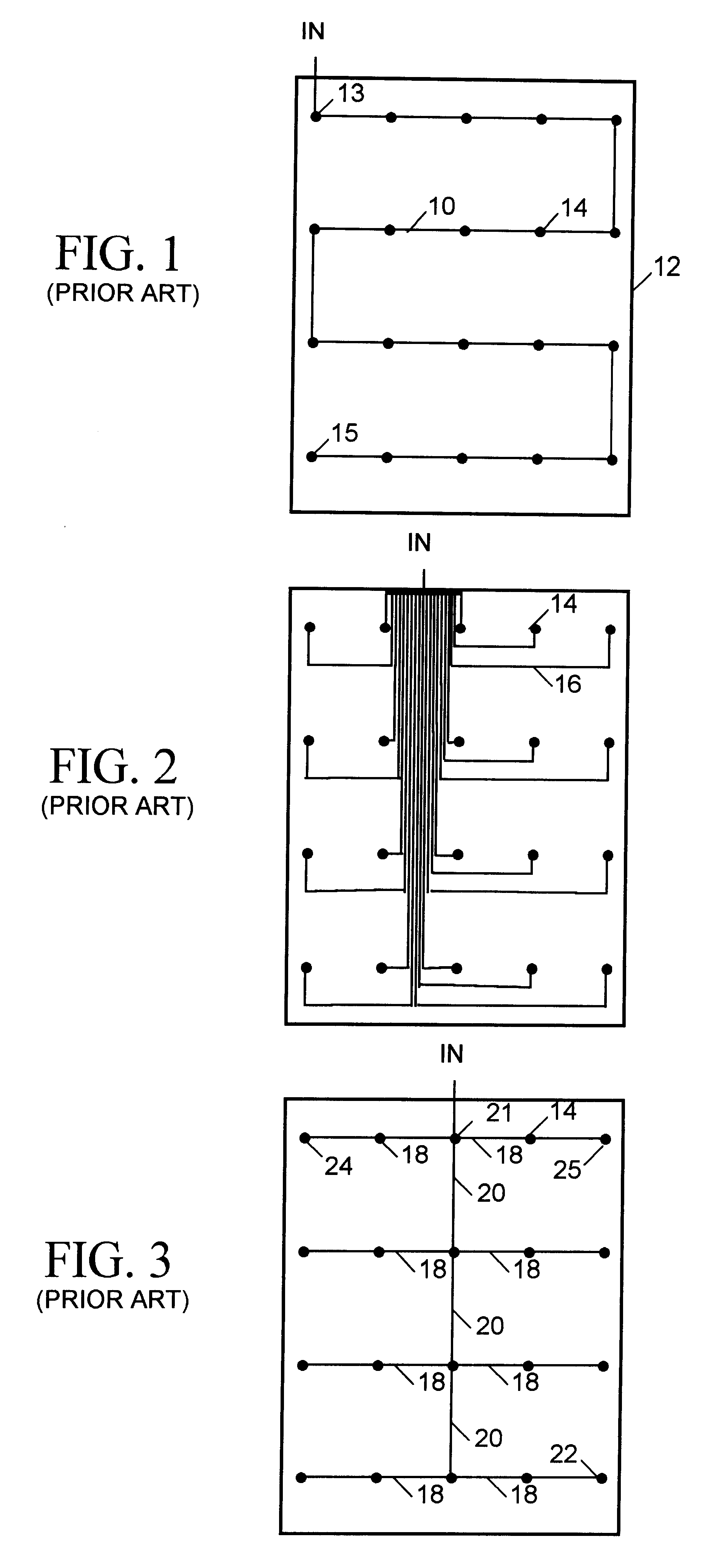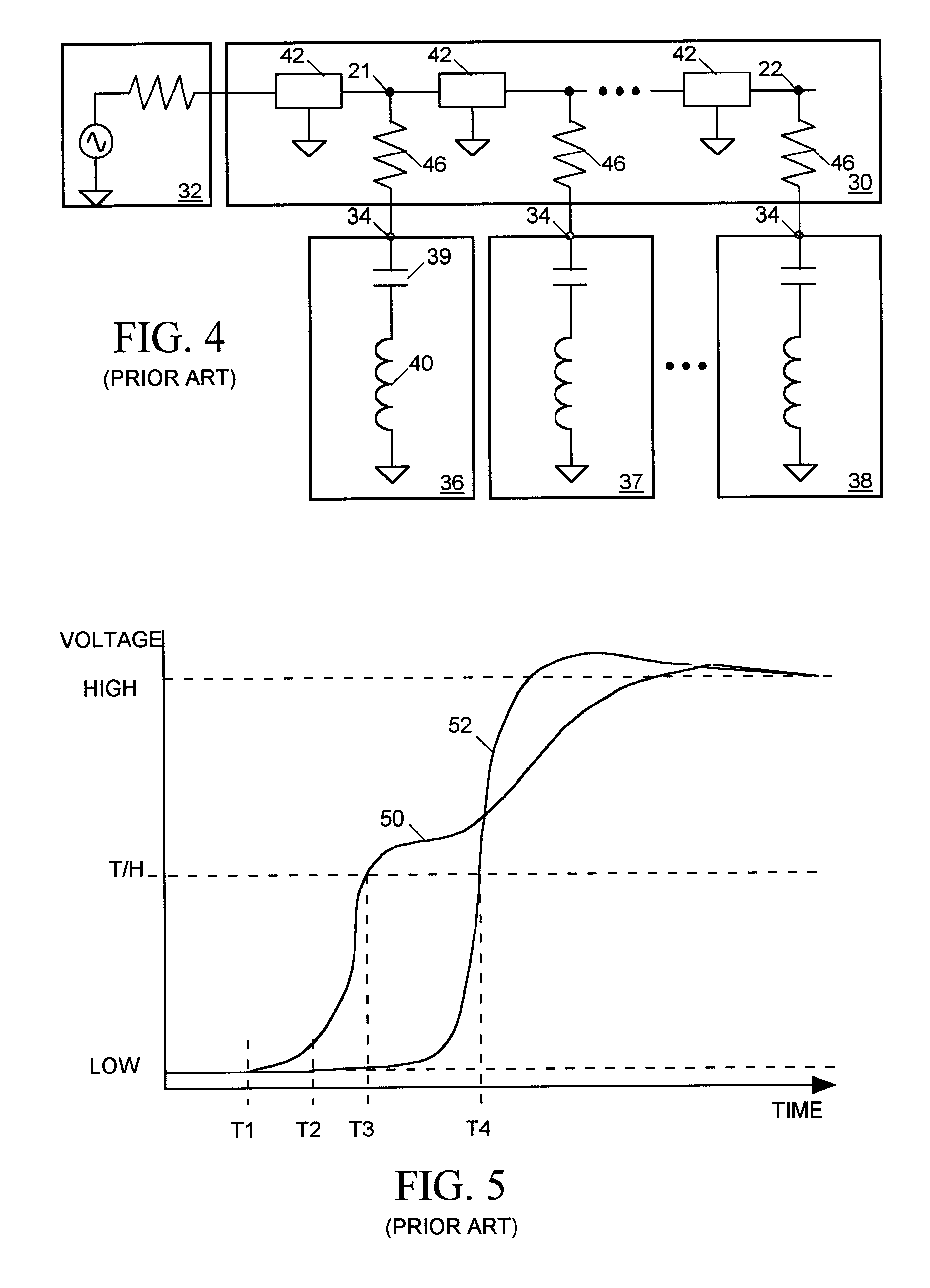Closed-grid bus architecture for wafer interconnect structure
a closed-grid bus and interconnect technology, applied in the direction of cross-talk/noise/interference reduction, individual semiconductor device testing, instruments, etc., can solve the problems of unsuitable interconnect structure for wafer-level tester interconnect, untested ic on each wafer, and distorted signal wave front of the daisy chain bus
- Summary
- Abstract
- Description
- Claims
- Application Information
AI Technical Summary
Problems solved by technology
Method used
Image
Examples
example pcb layout
FIG. 13 is a simplified plan view of a portion of an example semiconductor wafer 150 containing a 4.times.5 array of ICs 152, each IC having 6 pads 154. FIGS. 14-19 describe a layout for a PCB within an interconnect structure that will provide six closed-grid buses, each linking a separate set of twenty corresponding I / O pads 154 of all twenty ICs 152 to a separate tester channel.
FIG. 14 is a simplified (not to scale) plan view of a portion of the top layer 121 of the PCB. A set of six conductive pads 158 are arranged on layer 156 to receive pogo pin or coaxial conductors from the six channels. A set of traces 160, suitably of similar length, link pads 158 to a set of six vias 162 passing downward to a next lower layer of the PCB.
FIG. 15 is a simplified (not to scale) plan view of a portion of that next lower layer 122. Layer 122 includes a set of eighteen traces 164 extending along "east / west" axes. The six vias 162 from top layer 121 are each linked to a separate one of traces 164...
PUM
| Property | Measurement | Unit |
|---|---|---|
| Electrical conductor | aaaaa | aaaaa |
Abstract
Description
Claims
Application Information
 Login to View More
Login to View More - R&D
- Intellectual Property
- Life Sciences
- Materials
- Tech Scout
- Unparalleled Data Quality
- Higher Quality Content
- 60% Fewer Hallucinations
Browse by: Latest US Patents, China's latest patents, Technical Efficacy Thesaurus, Application Domain, Technology Topic, Popular Technical Reports.
© 2025 PatSnap. All rights reserved.Legal|Privacy policy|Modern Slavery Act Transparency Statement|Sitemap|About US| Contact US: help@patsnap.com



